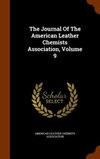Typical Defects of Natural Phospholipid Fatliquors in Leather Industry and Their Solutions
IF 0.5
4区 工程技术
Q4 CHEMISTRY, APPLIED
Journal of The American Leather Chemists Association
Pub Date : 2021-11-01
DOI:10.34314/jalca.v116i11.4663
引用次数: 1
Abstract
Leather made with soybean phospholipid fatliquors is prone to problems such as yellowing, elevated hexavalent chromium content, and undesirable odor. In this study, the aforementioned typical defects of soybean phospholipid fatliquors were investigated in respect to the main components, the antioxidants and the unsaturation degree of the natural soybean phospholipid. The results showed that the oxidation of soybean phospholipid is the primary source for its yellowing, elevated hexavalent chromium content, and undesirable odor. The volatile aldehydes produced by lipid oxidative rancidity are the main components of the undesirable odor. The purification of natural soybean phospholipid through removing the non-phospholipid components cannot solve the problems caused by oxidation of phospholipid. Furthermore, as a typical natural antioxidant existing in natural soybean phospholipid, tocopherols can restrain the oxidation of phospholipid to a certain degree, however, the dissolving out and destruction of tocopherols at high temperature in the phospholipid purification process can lead to more obviously oxidation of phospholipids. Additionally, the oxidation defects of phospholipid cannot be completely resolved by adding extra tocopherols, even at high dosages. The research finds that the defects of soybean phospholipid fatliquors can be thoroughly solved by increasing the saturation degree of lipid through addition reaction, the suggested iodine value of phospholipid products is lower than 20 g I2/100 g.天然磷脂加脂剂在皮革工业中的典型缺陷及其解决方法
用大豆磷脂脂质制成的皮革容易出现发黄、六价铬含量升高和难闻气味等问题。本研究从大豆磷脂的主要成分、抗氧化剂和天然大豆磷脂的不饱和程度等方面考察了上述大豆磷脂脂类的典型缺陷。结果表明,大豆磷脂氧化是其发黄、六价铬含量升高和产生异味的主要原因。油脂氧化酸败产生的挥发性醛是产生不良气味的主要成分。通过去除非磷脂成分提纯天然大豆磷脂,并不能解决磷脂氧化带来的问题。此外,作为天然大豆磷脂中存在的一种典型的天然抗氧化剂,生育酚可以在一定程度上抑制磷脂的氧化,但在磷脂纯化过程中,生育酚在高温下的溶出和破坏会导致磷脂的氧化更加明显。此外,磷脂的氧化缺陷不能通过添加额外的生育酚完全解决,即使在高剂量。研究发现,通过加成反应提高脂质饱和度,可以彻底解决大豆磷脂脂质液的缺陷,磷脂产品的建议碘值低于20 g /100 g。
本文章由计算机程序翻译,如有差异,请以英文原文为准。
求助全文
约1分钟内获得全文
求助全文
来源期刊

Journal of The American Leather Chemists Association
工程技术-材料科学:纺织
CiteScore
1.30
自引率
33.30%
发文量
29
审稿时长
3 months
期刊介绍:
The Journal of the American Leather Chemists Association publishes manuscripts on all aspects of leather science, engineering, technology, and economics, and will consider related subjects that address concerns of the industry. Examples: hide/skin quality or utilization, leather production methods/equipment, tanning materials/leather chemicals, new and improved leathers, collagen studies, leather by-products, impacts of changes in leather products industries, process efficiency, sustainability, regulatory, safety, environmental, tannery waste management and industry economics.
 求助内容:
求助内容: 应助结果提醒方式:
应助结果提醒方式:


